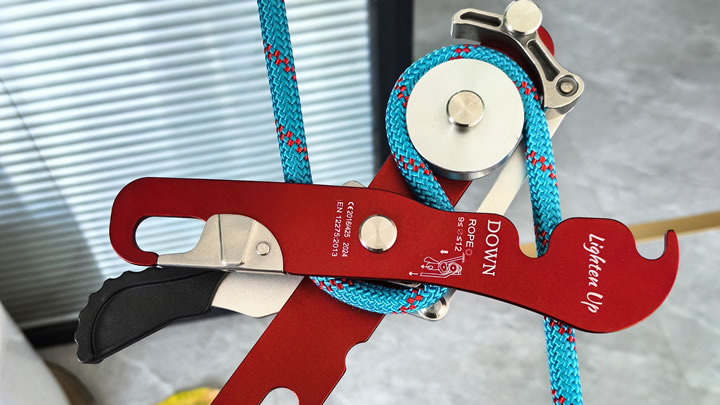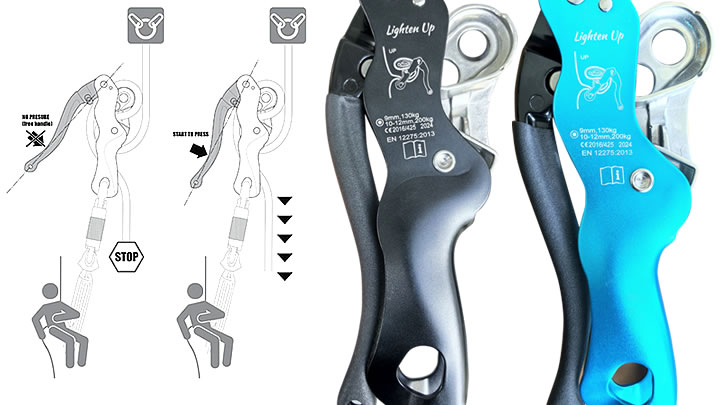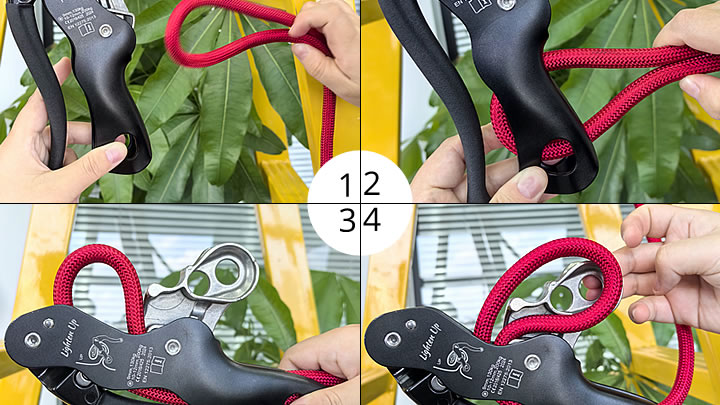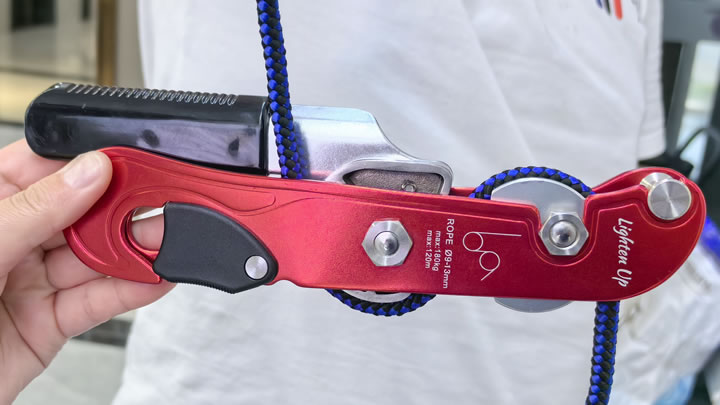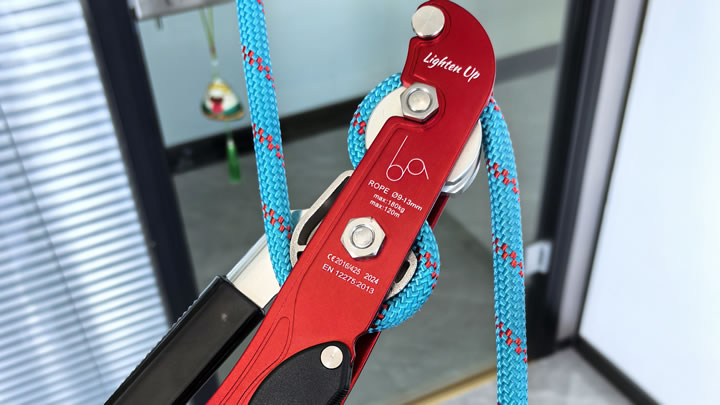How to Set Up Climbing Descent STOPs: Your Critical Backup System
Rappelling is statistically one of the most dangerous phases of climbing. A simple mistake or equipment failure can have catastrophic consequences. This is where Descent STOPs (Safety Tie-Off Points) become non-negotiable. They function as emergency brake points strategically placed throughout your rappel, allowing you to halt an uncontrolled descent instantly. Mastering their setup is fundamental for safe multi-pitch climbing or any complex descent. Here’s how to do it right:
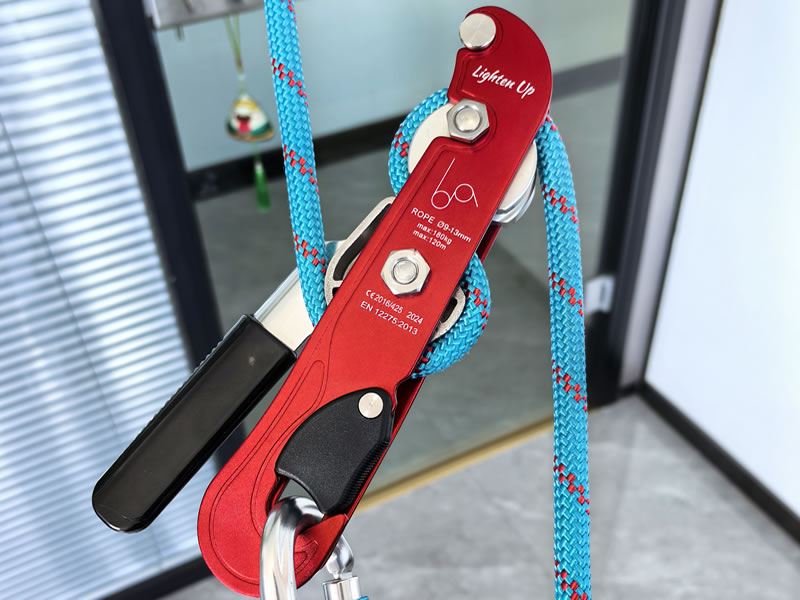
1. Understand the Components:
* Your Rappel Device: The primary friction source (ATC, Pirana, Figure 8, etc.).
* Backup Friction Hitch: A Prusik knot (3-5 wraps), Autoblock (French Prusik), or Klemheist tied with 5-7mm accessory cord. This is the core of the STOP.
* Carabiner: A locking carabiner (screwgate or auto-locker) to connect the friction hitch to your harness belay loop.
* The Rope: Your weighted "brake strand" below the rappel device.
2. The Crucial Setup Sequence:
* **Anchor & Rappel Device:** Securely attach yourself to the anchor. Thread your rappel device onto the rope(s) as normal and connect it to your harness belay loop with a locking carabiner. Weight the system to establish the brake strand.
* **Tie the Friction Hitch:** Form your chosen friction hitch (Prusik or Autoblock are most common) **directly onto the brake strand** of the rope. Use enough wraps for sufficient grip (test it!).
* **Connect the Hitch to YOU:** Clip the friction hitch's loop **securely into your harness belay loop using a separate locking carabiner.** This connection point is vital.
* **Position is Paramount:** This is the MOST critical step. **The friction hitch MUST be attached ABOVE your rappel device on the brake strand.** If placed below the device, it will be ineffective during a fall.3. Creating the STOP Point:
* As you descend past an intermediate anchor point (like bolts on a sport route, a sling on trad, or a pre-placed knot in the rope), this anchor point becomes your potential STOP location.
* **Attach:** Clip a quickdraw, sling, or directly attach your friction hitch carabiner to this anchor point *before* descending past it. **Do NOT disconnect the hitch from your belay loop.**
* **Function:** If you lose control or need to stop immediately, releasing the brake hand allows the weighted friction hitch to instantly cinch down on the rope *at the anchor point*, halting your fall. Your rappel device remains loaded below the STOP.4. Testing & Best Practices:
* **TEST BEFORE YOU TRUST:** While still securely attached to the *upper* anchor (before descending past the new STOP point), deliberately simulate a fall. Lean back, remove both hands from the brake strand, and ensure the friction hitch engages instantly and holds your full weight on the STOP anchor. Do this for *every* STOP you set.
* **Manage Rope:** Keep the rope between your device and the friction hitch reasonably taut. Excessive slack can delay engagement.
* **Gear Matters:** Use a cord diameter appropriate for your rope (thinner for single ropes, thicker for twins/doubles). Inspect cordage regularly for wear.
* **Hitch Choice:** Autoblocks often engage slightly easier than Prusiks. Prusiks can be more secure in icy/muddy conditions but require active management. Know your knots!
* **Never Skip:** Use STOPs on *every* rappel, especially complex, multi-stage, or overhanging ones.
* **Practice:** Rehearse STOP setup and testing extensively on the ground and on easy, low-angle terrain before relying on it in serious situations.Why STOPs Save Lives:
Descent STOPs eliminate the terrifying "free-fall" scenario during a rappel failure. Whether caused by loss of brake hand control, device malfunction, rockfall striking you, or simply getting tangled, the STOP provides an immediate, life-saving redundancy. It gives you time to regain control, assess the situation, ascend the rope if needed, or wait for assistance.
Conclusion:
Setting up Climbing Descent STOPs isn't an advanced trick; it's a core safety skill. By correctly placing a friction hitch above your rappel device on the brake strand and connecting it to your belay loop, then attaching this system to intermediate anchors as you descend and rigorously testing each one, you create a vital safety net. This system provides peace of mind and drastically reduces the risks inherent in descending on ropes. Prioritize learning, practicing, and consistently implementing STOPs – master this technique before you desperately need it. Your safety depends on it.

